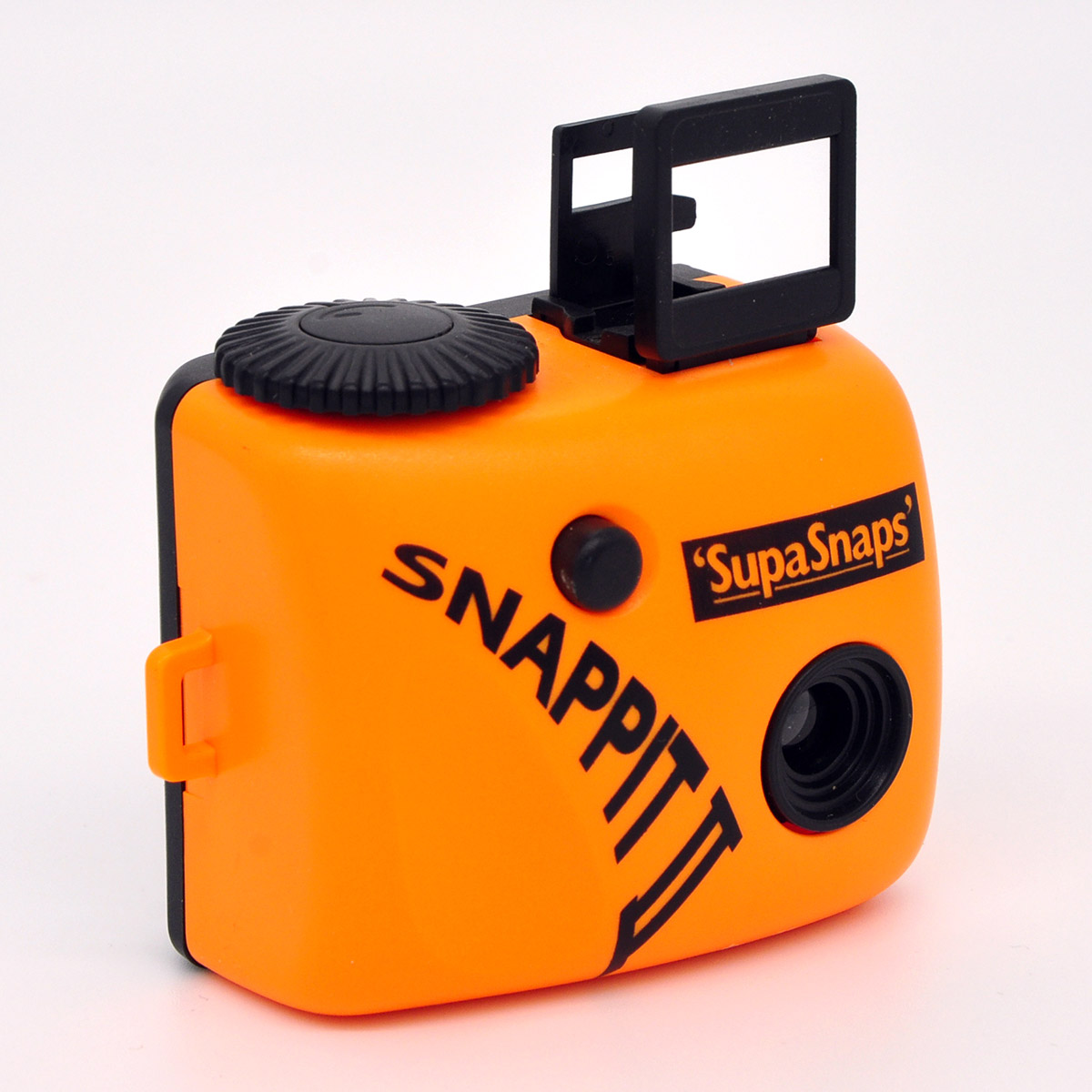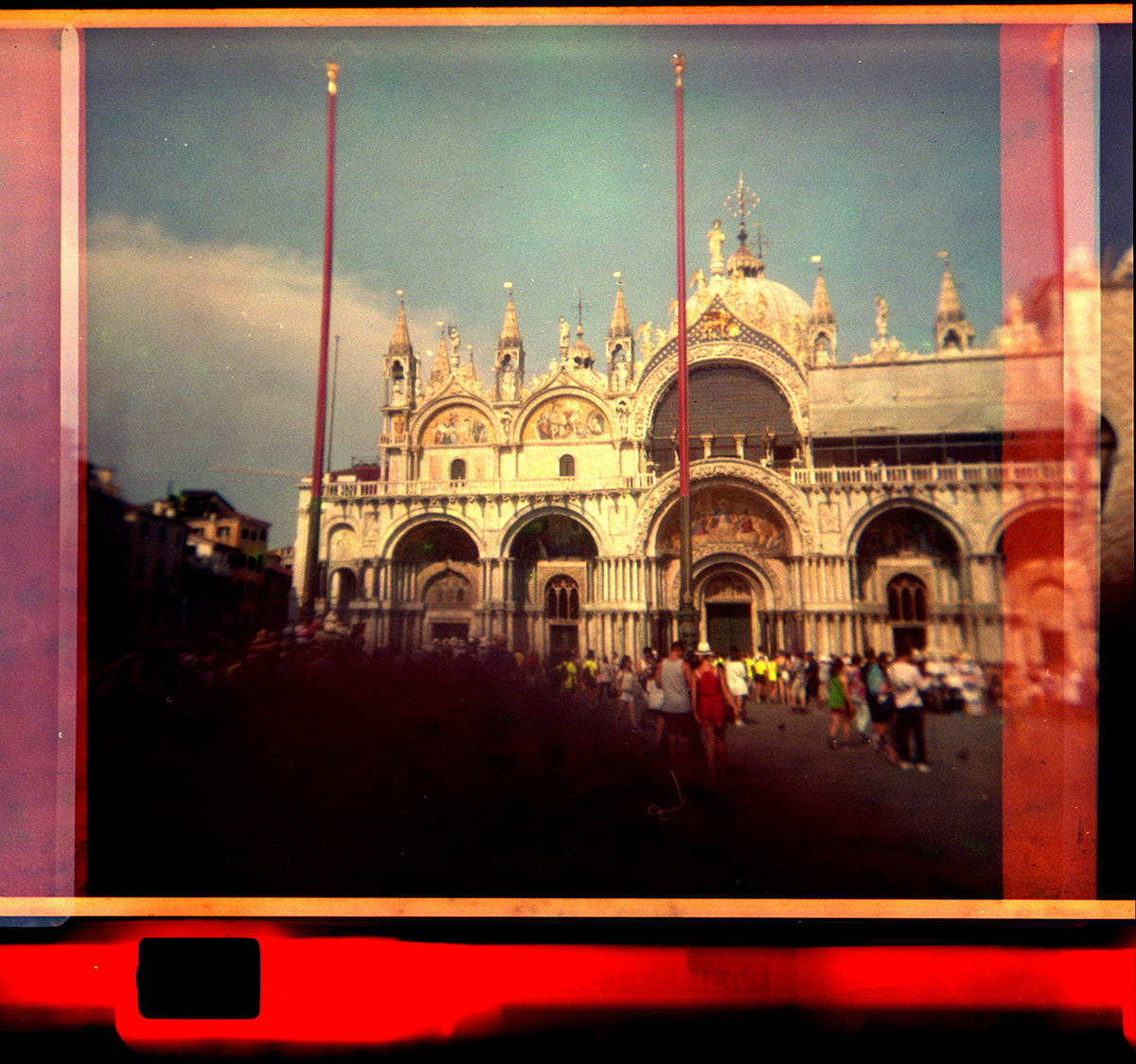SupaSnaps Snappit
Cameras don’t come much simpler or cheaper than the SupaSnaps Snappit, in fact cheap is an understatement, as these were given away free by the high street chain SupaSnaps in the early 1990s. If memory serves, you got a free camera whenever you had a film processed, sometimes you even got a free 126 cartridge as well. They came in a whole range of colours, and often had cartoon characters printed on them, or came with stickers so that you could customise them to your own taste. I don’t know how many of these were actually used, after all, the chances are you already had a camera if you were having a film processed, but I do know that they featured heavily in rummage boxes in charity shops and car boot sales for many years, you still see them now, but not very often. For all its cheapness, the Snappit has a certain style to it, and it turns out to have been designed by Sebastian Conran, of the Conran Design Dynasty.
The camera is actually narrower than the film cartridge, which at first seems a little puzzling, until you realise that the film supply end of the cartridge remains sticking out of the side, with only the take up spool getting inside the body. There were similar, much smaller versions made for the 110 “Pocket Instamatic” cartridges.
An immediate problem with using any 126 camera is that the last cartridges rolled off the production line in 2008, so there is no option but to track down an expired but unused film, sometimes I strike lucky in a charity shop, but you can usually find them on eBay, albeit at upwards of £10, and frequently dating back three decades. The Boots own brand cartridge that I unearthed for this week is a spring chicken compared with some I’ve used, dating as it does to 1994
To load the camera, you simply slide the back off, pop the take up spool end of the cartridge in, and replace the back. Just like 120 roll film, there is a paper backing printed with frames numbers, which are visible through a cut out in the back. All you need to do is wind on, compose and shoot, the frame number is only for reference, unlike 120 film, you don’t have to watch the backing paper for the right place to stop as the camera does this for you.
The 126 format was very much aimed at the snap shot market, ideal for holidays in sunny climes where there is plenty of light about. I decided to play along, and took mine with me on a trip to Venice. With only a simple square folding frame for a viewfinder, composition is a bit hit and miss, nevertheless, I sought out the usual tourist sites, and am particularly proud of this one, which as well as showing St. Mark’s Basilica, revives the age old tradition of accidentally including the photographer’s finger in the shot!


